Did you know that banana shallots, also known as echalions, have become increasingly popular in British kitchens and are now readily available in supermarkets? These unique Allium cepa of Aggregatum Group are a cross between an onion and a shallot, offering a flavor that combines the ease of an onion with the sweet and subtle taste of a shallot.
With their large oval bulbs and easy-to-peel amber-colored skin, banana shallots have quickly become a favorite ingredient among home cooks. Their versatility allows them to be used in a variety of recipes, from braising with meats to roasting with vegetables, or adding depth to soups and sauces. While they can be substituted with regular shallots or onions, the size and milder taste of banana shallots may require some adjustments in quantities.
Key Takeaways
- Banana shallots are a cross between an onion and a shallot, offering a unique flavor profile.
- They are versatile and can be used in a variety of recipes, adding depth and sweetness to dishes.
- While readily available in British supermarkets, banana shallots may require some sourcing effort in the United States.
- Understanding how to store and use banana shallots can help home chefs incorporate them into their culinary creations.
- Discover the benefits of cooking with banana shallots, such as their subtle flavor and nutritional content.
The Different Types of Shallots
Shallots are a versatile and flavorful ingredient that comes in various varieties. Each type of shallot has its own unique characteristics, including size, color, and flavor. Let’s explore the different types of shallots and how they differ from one another.
French Shallot
The French shallot is a classic variety known for its small size and elongated shape. It has a reddish-brown exterior and a sweet, mild flavor. French shallots are often used in French cuisine and are popular for their delicate taste.
Pikant Shallot
The Pikant shallot is a variety that features medium-sized bulbs with a reddish-brown skin. It has a slightly stronger flavor compared to the French shallot, making it a great choice for adding a deeper taste to your dishes.
French Grey Shallot
The French Grey shallot is another traditional variety that has a purplish-grey skin. It has a complex flavor profile with a subtle sweetness and mild pungency. French Grey shallots are prized for their exceptional taste and are often used in gourmet cooking.
Echalion (Banana Shallot)
The Echalion, also known as the banana shallot, is the largest variety of shallot. It features a brown or rust-colored skin and has a sweet, mild flavor. The Echalion is versatile and can be used in a wide range of recipes, from sauces to roasted dishes.
Jersey Shallot
The Jersey shallot is a medium-sized variety with a reddish-brown exterior. It has a slightly stronger flavor compared to the French shallot. Jersey shallots are popular for their versatility and can be used in various cuisines and cooking styles.
Ambition Shallot
The Ambition shallot is a newer variety that boasts smaller bulbs with a reddish exterior. It has a mild and slightly sweet taste, making it a great choice for those who prefer a milder flavor in their dishes.
Prisma Shallot
The Prisma shallot is a relatively new variety known for its beautiful pink skin. It has a sweet and aromatic flavor that adds a delightful touch to dishes. Prisma shallots are often used in gourmet cooking and are highly sought after by home chefs and professional cooks alike.
Yellow Shallot
The Yellow shallot is a larger variety with a golden-yellow skin. It has a milder taste compared to other shallot varieties, making it a versatile choice for various recipes. Yellow shallots are often used in soups, stews, and sauces.
Understanding the different types of shallots can help home chefs choose the right variety for their recipes. Whether you’re looking for a mild and sweet flavor or a more pungent taste, there is a shallot variety to suit your culinary needs.
| Shallot Variety | Size | Color | Flavor |
|---|---|---|---|
| French Shallot | Small | Reddish-brown | Sweet, mild |
| Pikant Shallot | Medium | Reddish-brown | Strong |
| French Grey Shallot | Medium | Purplish-grey | Sweet, pungent |
| Echalion (Banana Shallot) | Largest | Brown/rust-colored | Sweet, mild |
| Jersey Shallot | Medium | Reddish-brown | Strong |
| Ambition Shallot | Small | Reddish | Mild, sweet |
| Prisma Shallot | Medium | Pink | Sweet, aromatic |
| Yellow Shallot | Larger | Golden-yellow | Mild |
Where to Buy and How to Use Banana Shallots
Banana shallots, with their distinctive shape and delicious flavor, are a must-have ingredient for any aspiring home chef. While they are commonly available in British supermarkets, the search for these culinary gems in the United States may require a bit more effort. However, fear not! Specialty grocery stores and online retailers are excellent sources for procuring these versatile shallots.
When it comes to using banana shallots in your cooking, the possibilities are endless. Their mild and sweet taste adds a delightful depth to a variety of dishes. Here are a few ideas to get you started:
- Add depth to broths and sauces: Finely chop banana shallots and incorporate them into your favorite broths and sauces for an added layer of flavor.
- Sauté with mushrooms: Sautéed banana shallots and mushrooms make for a delicious and aromatic side dish or a flavorful addition to pasta and rice dishes.
- Roast with vegetables: Toss banana shallots with your favorite veggies, a drizzle of olive oil, and seasonings of your choice. Roast them in the oven for a mouthwatering side dish.
- Braise with meats: The natural sweetness of banana shallots pairs perfectly with braised meats such as beef, lamb, or poultry, adding depth and complexity to your dishes.
These are just a few examples of how you can harness the potential of banana shallots to elevate your culinary creations. Let your creativity run wild in the kitchen, experimenting with different flavor combinations and dishes.
Incorporating Banana Shallots into Recipes
To demonstrate the versatility of banana shallots, here is a simple yet delicious recipe:
Roasted Vegetable Medley with Banana Shallots
| Ingredients | Instructions |
|---|---|
|
|
This roasted vegetable medley is just one example of how banana shallots can add incredible flavor to simple dishes. Feel free to adapt the recipe by including your favorite seasonal vegetables or experimenting with different herbs and spices.
So, next time you’re on the hunt for banana shallots, check out your local supermarket if you’re in the UK, or explore specialty grocery stores or online retailers in the US. Once you have your hands on these versatile shallots, unleash your culinary creativity and enjoy the incredible flavors they bring to your recipes.
The Benefits of Cooking with Banana Shallots
When it comes to adding flavor and depth to your culinary creations, cooking with banana shallots can take your dishes to the next level. These versatile ingredients offer a range of benefits that make them a go-to choice for home chefs.
One of the key advantages of using banana shallots in your recipes is their ability to add a subtle hint of flavor. Whether you’re using them as the main ingredient or as a supporting flavor, their mild and sweet taste enhances the overall profile of a dish without overpowering other ingredients.
But the benefits don’t stop at flavor alone. Banana shallots are also packed with essential vitamins, minerals, and health-protecting compounds. They contain quercetin, a powerful antioxidant that has been linked to numerous health benefits, including reducing inflammation and strengthening the immune system. Additionally, banana shallots are rich in organosulfur compounds, which have shown potential in preventing chronic diseases.
Furthermore, banana shallots are low in fat and a good source of important minerals like copper and iron. By incorporating banana shallots into your meals, you not only enhance the taste but also provide your body with valuable nutrients.
“Cooking with banana shallots not only adds delicious flavor to dishes but also provides a nutritional boost.”
So whether you’re sautéing them with mushrooms, roasting them with vegetables, or adding them to sauces and soups, cooking with banana shallots can elevate the taste and nutritional value of your recipes.
Key Benefits of Cooking with Banana Shallots:
- Subtle flavor enhancement
- Rich in vitamins and minerals
- Contains health-protecting compounds
- Low in fat
- Good source of copper and iron
Discover the countless possibilities that cooking with banana shallots brings to your kitchen and enjoy the mouthwatering results.
Best Ways to Store Banana Shallots
Proper storage is crucial for ensuring the freshness and longevity of banana shallots. By following these simple steps, you can store your banana shallots effectively and have a readily available supply for your cooking needs.
Room Temperature Storage
If you plan to use your banana shallots within the next 2 to 4 weeks, storing them at room temperature is a suitable option. Here’s how:
- Inspect your banana shallots to ensure there are no signs of damage or spoilage.
- Find a cool and well-ventilated spot in your kitchen or pantry.
- Place the banana shallots in a single layer, ensuring they are not overcrowded.
- Avoid exposing them to direct sunlight or excessive heat.
Refrigeration for Extended Shelf Life
If you want to extend the shelf life of your banana shallots for up to 3 to 6 months, refrigeration is the preferred method. Follow these steps:
- Clean and dry your banana shallots thoroughly before storage.
- Wrap each individual shallot in a dry paper towel or place them in a breathable container.
- Store the wrapped shallots in the crisper drawer of your refrigerator.
- Keep the temperature of your refrigerator between 32°F and 40°F (0°C and 4.4°C).
Remember to separate any bruised or damaged shallots from the rest to prevent spoilage.
Tip: Avoid storing banana shallots near fruits and vegetables that emit ethylene gas, such as apples or tomatoes, as this can accelerate ripening and lead to spoilage.
By following these storage methods, you can ensure that your banana shallots remain fresh, flavorful, and ready to be used in your favorite recipes.
The Versatility of Banana Shallots in Recipes
Banana shallots are a versatile ingredient that can elevate various dishes, adding depth and flavor. Whether you’re braising meats, roasting vegetables, or preparing soups and sauces, cooking with banana shallots can take your recipes to the next level.
One of the great things about banana shallots is their ability to enhance the taste of a wide range of cuisines. Their mild and sweet flavor pairs well with both subtle and bold ingredients, allowing for endless culinary possibilities. Let’s explore some of the ways you can use banana shallots in your cooking:
1. Braising with Meats
Banana shallots are perfect for adding depth and richness to meat dishes. Whether you’re braising chicken, beef, lamb, or pork, sautéed banana shallots can bring a delightful sweetness to the savory flavors. Their large size allows them to withstand longer cooking times without losing their texture or taste.
2. Roasting with Vegetables
When roasted, banana shallots develop a caramelized flavor that adds complexity to roasted vegetables. Toss them with potatoes, carrots, Brussels sprouts, or any other favorite vegetables, and let the natural sweetness of the shallots elevate the dish.
3. Adding to Soups and Sauces
The subtle yet distinctive flavor of banana shallots makes them an excellent addition to soups and sauces. Whether you’re making a hearty homemade soup or a flavorful sauce for your pasta, finely chopped or sautéed banana shallots can provide a delicious depth of flavor.
Furthermore, banana shallots can be finely chopped and used as a flavor enhancer in broths and dressings. Their versatility allows them to blend effortlessly with other ingredients, enhancing the overall taste of the dish.
To give you an idea of the endless possibilities, here’s a simple yet satisfying recipe showcasing the versatility of banana shallots:
Banana Shallot Vinaigrette
| Ingredients | Instructions |
|---|---|
|
|
This tangy and flavorful vinaigrette showcases the unique taste of banana shallots and can be used in various dishes.
Experiment with different recipes and cooking techniques to fully enjoy the versatility of banana shallots in your culinary creations.
How Banana Shallots Compare to Regular Shallots
When it comes to shallots, there are different varieties to choose from. One popular option is the banana shallot, which offers a unique twist to traditional recipes. But how do banana shallots compare to regular shallots? Let’s find out.
Banana shallots are known for their larger size, making them easier to handle and peel in the kitchen. Their milder taste adds a subtle flavor to dishes, making them a versatile ingredient for various recipes. In fact, banana shallots can be used as a substitute for regular shallots, with some adjustments in the quantity used.
“The larger size of banana shallots makes them easier to handle and peel in the kitchen.”
However, it’s important to note that if you’re looking for a stronger allium taste, regular shallots or even onions might be preferred. Each type of shallot brings its own unique characteristics to the table, allowing home chefs to experiment and choose the right option for their culinary creations.
In summary, banana shallots offer a larger size and milder taste compared to regular shallots. They can be used as a substitute in recipes, but bear in mind that the strength of flavor may differ. Understanding the differences between banana shallots and regular shallots empowers home chefs to make informed decisions in the kitchen.
Comparison Between Banana Shallots and Regular Shallots
| Characteristic | Banana Shallots | Regular Shallots |
|---|---|---|
| Size | Larger | Smaller |
| Taste | Mild and sweet | Milder with a stronger allium taste |
| Substitute Potential | Can be used as a substitute with adjustments in quantity | N/A |
As seen in the table above, banana shallots possess distinct characteristics that set them apart from regular shallots. Their larger size and milder taste make them a favorable choice for many home chefs.
Tips for Peeling and Using Banana Shallots
Peeling banana shallots doesn’t have to be a daunting task. With a few simple tips, you can effortlessly handle and use these versatile ingredients in your cooking.
Peeling Banana Shallots
To make peeling banana shallots easier, follow these steps:
- Cut off the root end of the shallots.
- Blanch the shallots in boiling water for 3 minutes.
- Grip the shallots firmly from the “leaf-end” and squeeze them out of their skins.
- If needed, use a cloth to provide a better grip.
This simple technique will help you remove the skin of banana shallots effortlessly, saving you time and effort in the kitchen.
Using Banana Shallots in Recipes
Once you’ve peeled your banana shallots, there are numerous ways to incorporate them into your recipes:
- Chop them finely and add them to broths, sauces, or dressings for an extra layer of flavor.
- Sauté them with mushrooms or other vegetables for a savory side dish.
- Roast them alongside your favorite vegetables to enhance their natural sweetness.
- Add them to braised meat dishes for a depth of flavor that will elevate your culinary creations.
Banana shallots are incredibly versatile and can be used in a variety of cuisines and cooking styles. Feel free to experiment and find the methods that work best for you.
The image above illustrates the step-by-step process of peeling banana shallots, making it even easier for you to handle these flavorful ingredients.
By following these tips and techniques, you’ll be able to peel and use banana shallots with confidence, adding their unique flavor to your favorite dishes.
Understanding the Different Varieties of Shallots
Shallots are a diverse group of onions with distinctive characteristics that make them suitable for various culinary applications. Familiarizing yourself with the different varieties of shallots can help you elevate your cooking game and discover new flavors to experiment with.
The French Shallot
The French shallot, also known as Allium oschaninii or Allium stipitatum, is a popular choice among chefs for its sweet and delicate flavor. It features reddish-brown skin and a crisp texture that adds a delightful crunch to dishes.
Pikant
Pikant shallots are known for their robust flavor, slightly larger size, and reddish-brown skin. They have a stronger taste compared to other varieties, making them perfect for dishes that require a bolder shallot presence.
French Grey Shallot
The French Grey shallot, or Allium oschaninii var. Griselle, is a sought-after variety that hails from the Brittany region in France. It is characterized by its elongated shape, purple-tinged skin, and subtle onion-like taste.
Echalion (Banana Shallot)
One of the most popular and recognizable varieties, the Echalion, or banana shallot, boasts a unique elongated shape and a golden-brown skin. It combines the best qualities of onions and shallots, offering a sweet and mellow flavor with mild pungency.
Jersey
Jersey shallots have a round shape and reddish-brown skin. They are known for their rich and complex flavor profile, making them a favorite among chefs for use in sauces, dressings, and stews.
Ambition Shallot
Ambition shallots are an excellent choice for those who prefer a milder flavor. With a small to medium size and light brown skin, they can be used in various dishes where a subtle shallot taste is desired.
Prisma
If you’re looking for shallots that offer a delicate onion-like flavor, Prisma shallots are an excellent option. With their small size and soft yellow skin, they can be used as a versatile ingredient in both raw and cooked preparations.
Yellow Shallot (Dutch Shallot)
Yellow shallots, sometimes referred to as Dutch shallots, are characterized by their small size and pale yellow skin. They have a slightly milder taste compared to other varieties, making them a versatile choice for various recipes.
When shallots are not available, several substitutes can be used to achieve a similar flavor and texture in your dishes. Here are a few options:
- White or yellow onions
- Red onions
- Leeks
- Scallions (green onions)
By exploring the different varieties of shallots and their substitutes, you can widen your culinary repertoire and create delicious dishes tailored to your taste preferences.
Growing and Harvesting Shallots
Growing your own shallots can be a rewarding and cost-effective way to have a fresh supply of these versatile ingredients at your fingertips. With proper care and attention, you can cultivate shallots in your own garden or even in containers on your balcony.
To successfully grow shallots, follow these basic steps:
- Choose a well-drained location that receives ample sunlight. Shallots thrive in full sun, so select a spot in your garden that gets at least six hours of direct sunlight daily.
- Prepare the soil before planting by removing any weeds, rocks, or debris. Shallots prefer a friable soil that is rich in organic matter. You can add compost or well-rotted manure to improve the soil’s fertility.
- Plant shallot bulbs just below the soil surface with the pointed end facing upwards. Space them about 6 inches apart to allow enough room for the bulbs to develop.
- Water the shallots regularly, ensuring that the soil remains consistently moist. Avoid overwatering, as shallots are susceptible to rotting if the soil becomes waterlogged.
- Consider planting companion plants alongside your shallots to create a mutually beneficial environment. Lettuce, cabbage, beets, and herbs like thyme and parsley are excellent companions for shallots.
Harvesting shallots is an exciting moment for any home gardener. To determine when your shallots are ready to be harvested, pay attention to the green shoots that emerge from the soil. As the shoots begin to bend and wither, it’s a sign that the shallots are approaching maturity.
To harvest your shallots:
- Gently loosen the soil around the shallots with a garden fork or small trowel.
- Grasp the green shoots near the base, close to the soil level, and gently pull the shallot bulbs out of the ground.
- Once harvested, lay the shallots in a single layer in a dry and well-ventilated area. Avoid exposing them to direct sunlight.
- Allow the shallots to dry for a few weeks until the outer skin becomes papery and the bulbs firm up.
- After drying, trim the roots and foliage, leaving about an inch of stem attached to the bulb. Store the shallots in a cool, dark, and dry place until ready to use.
By growing and harvesting your own shallots, you gain a deeper appreciation for these unique ingredients and have the satisfaction of knowing exactly where your food comes from.
Seasonality and Availability of Shallots
Shallots are a versatile ingredient that can be incorporated into a variety of dishes year-round. The availability of shallots may vary depending on the specific variety and location. In the case of banana shallots, their peak season in the United Kingdom typically spans from September to Mid-May.
“The deep, rich flavor of banana shallots adds a delightful touch to winter recipes. From hearty stews and roasts to creamy soups and gratins, these shallots lend a distinct taste to seasonal dishes.”
– Chef Emily Carter
However, for those residing in the United States, finding banana shallots may require a bit more effort. While they may not be as readily available in mainstream supermarkets, specialty grocery stores and online retailers offer options for those seeking to include banana shallots in their recipes.
If you’re wondering where to buy banana shallots, consider exploring local specialty stores that focus on gourmet or international ingredients. Alternatively, online shopping platforms provide a convenient way to access a wider selection of shallot varieties, including banana shallots.
The benefits of finding fresh banana shallots:
- Enhance the flavor and depth of your dishes.
- Add a touch of sweetness to savory recipes.
- Provide the perfect complement to winter comfort foods.
Now that you know the seasonality and availability of banana shallots, you can plan your recipes accordingly and source these flavorful ingredients to elevate your culinary creations.
Conclusion
Banana shallots are a culinary gem that can elevate any dish with their unique flavor and versatility. Combining the ease of an onion with the delicate sweetness of a shallot, these amber-skinned bulbs have become a favorite among professional chefs and home cooks alike. Whether used as the star ingredient or a subtle enhancement, banana shallots add depth and complexity to recipes, making them an essential addition to any kitchen.
Understanding the characteristics of banana shallots allows home chefs to fully harness their culinary potential. From braising with meats to roasting with vegetables, these shallots can lend their incredible flavor to a diverse range of dishes. The milder taste of banana shallots may require adjustments in quantity, but their large size and easy-to-peel nature make them a joy to work with in the kitchen.
Proper storage is essential to keep your banana shallots fresh and ready for use. They can be stored at room temperature for a few weeks, but for longer shelf life, refrigeration is recommended. By ensuring the availability of this versatile ingredient, home chefs can unlock a world of possibilities in their cooking.
So, whether you’re a seasoned chef or a novice in the kitchen, embracing the potential of banana shallots will take your culinary creations to new heights. Let these flavorful bulbs inspire your cooking and bring delightful taste to every dish you create!

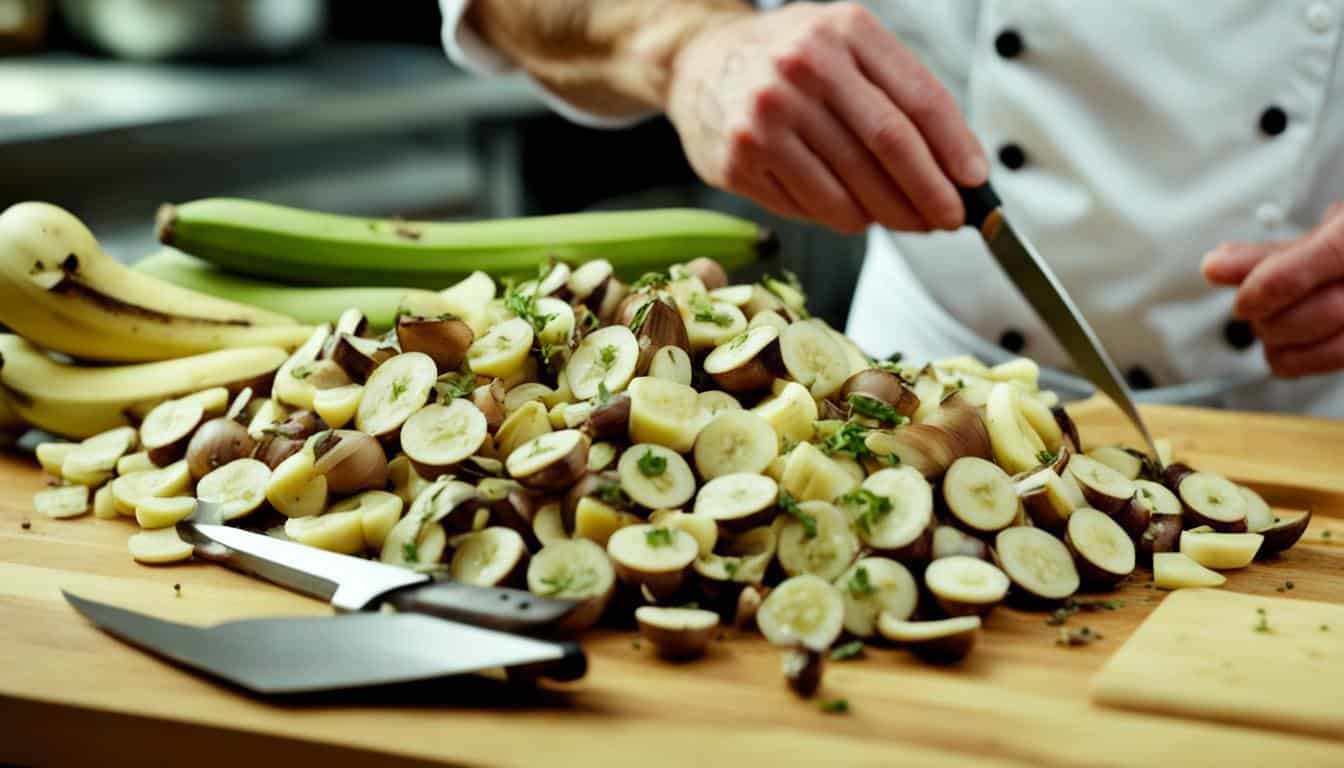
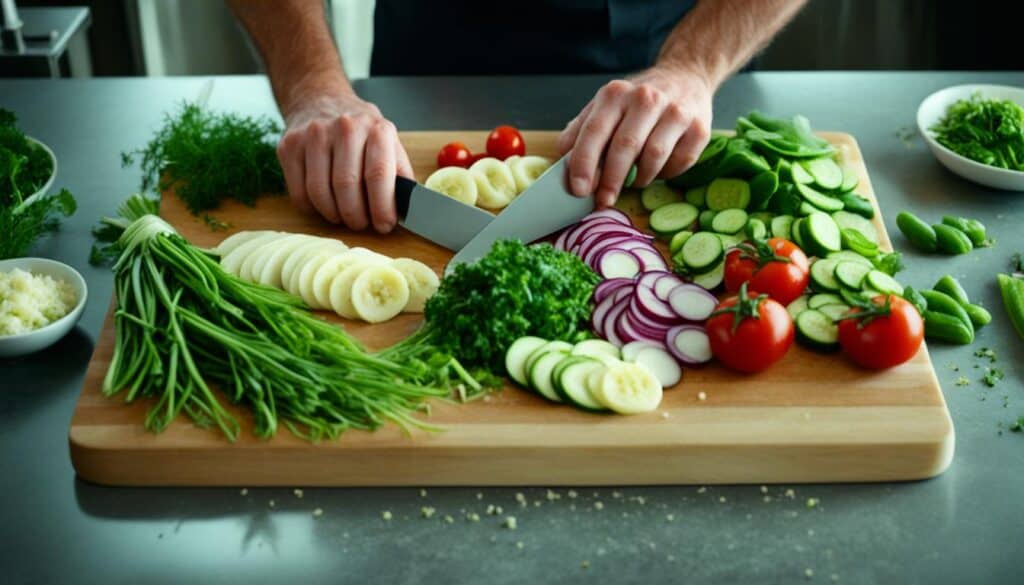
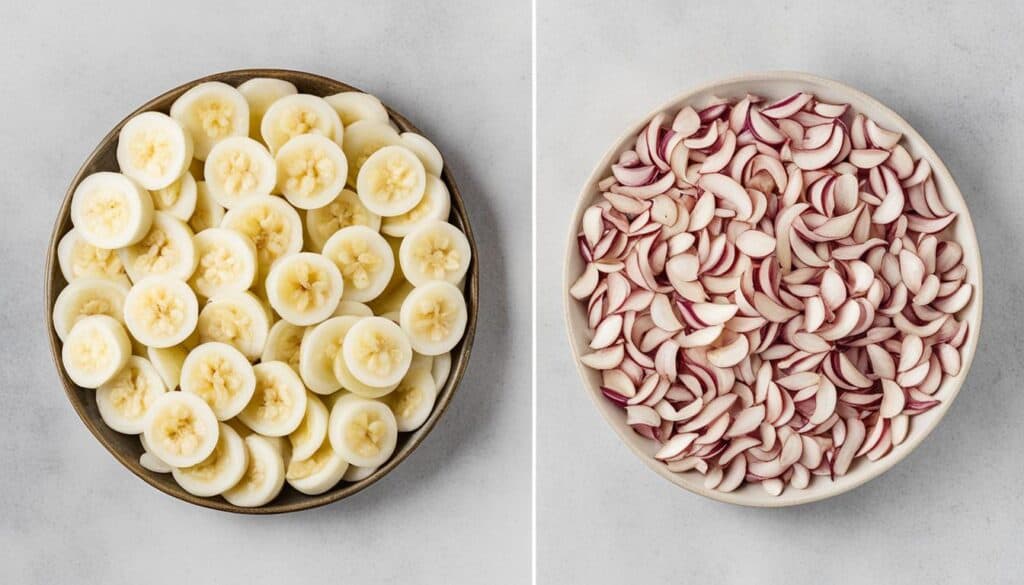
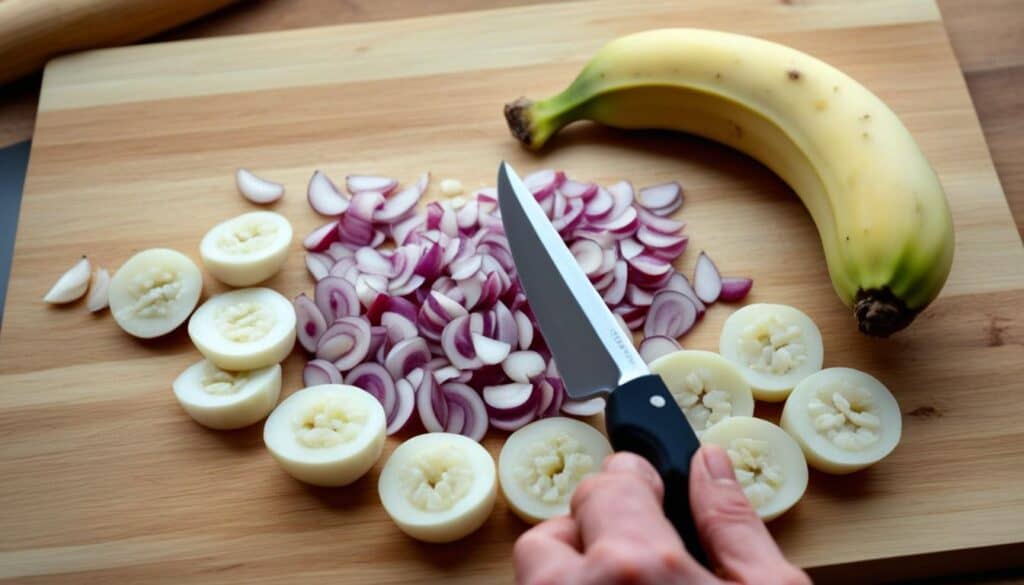
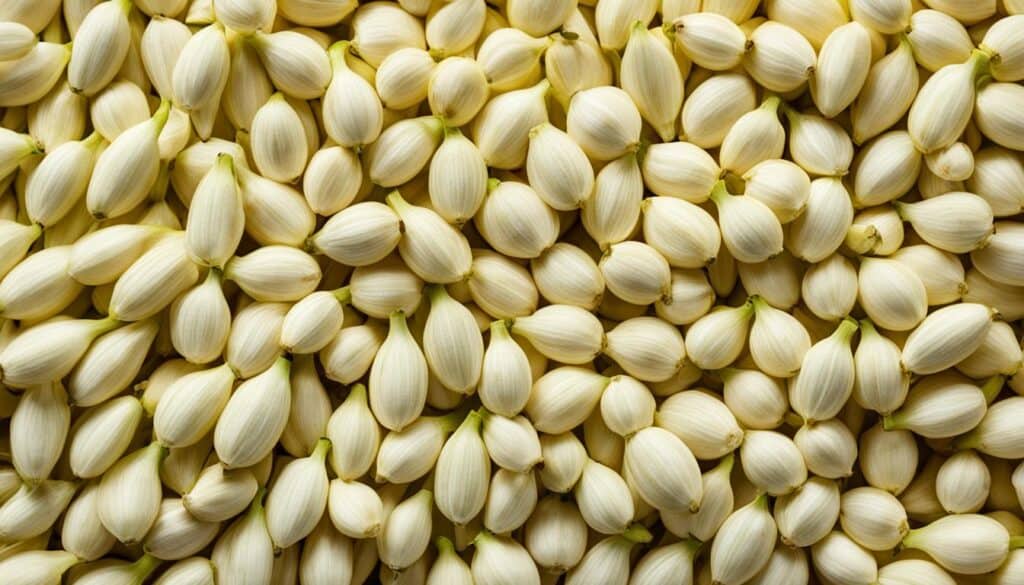
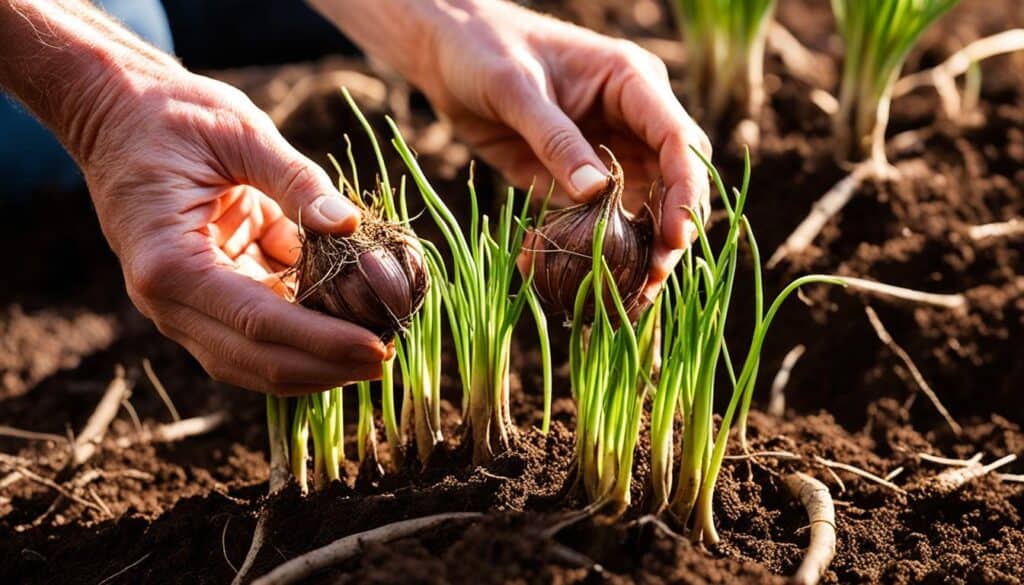

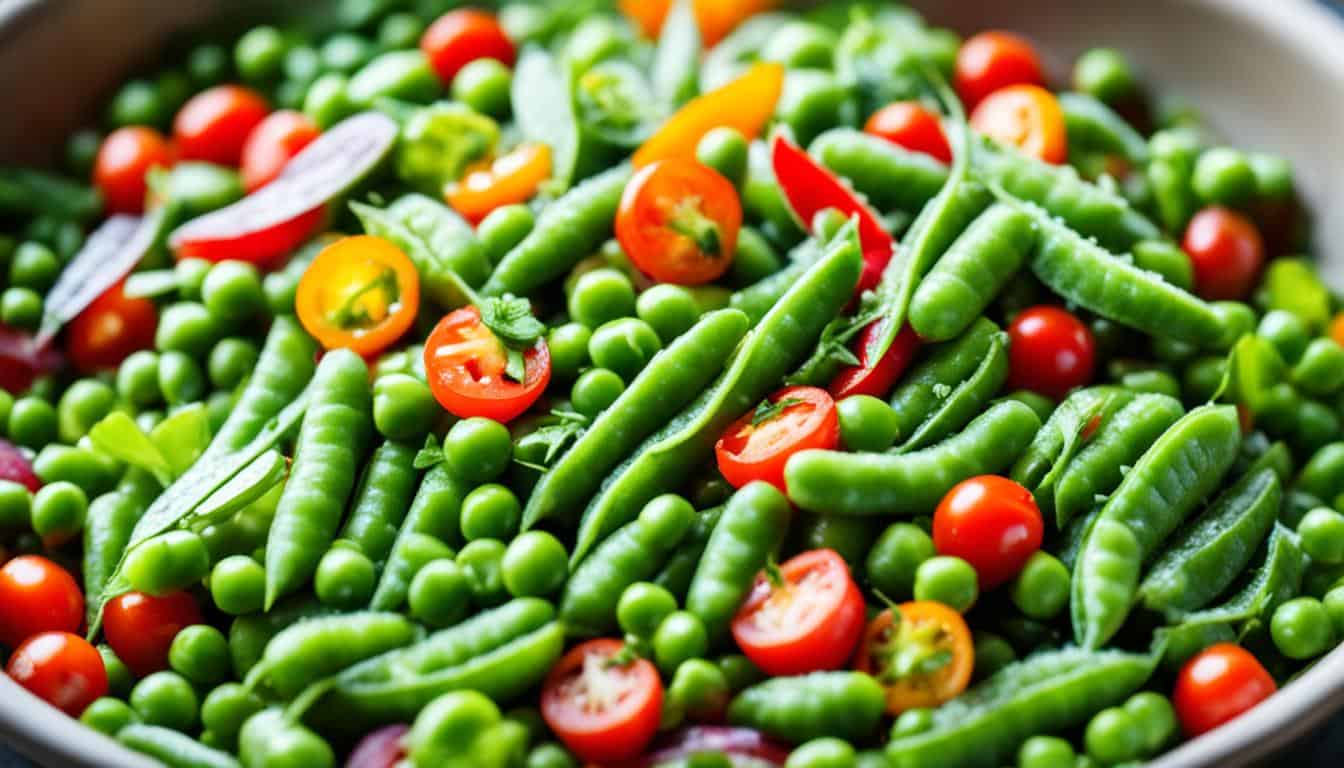
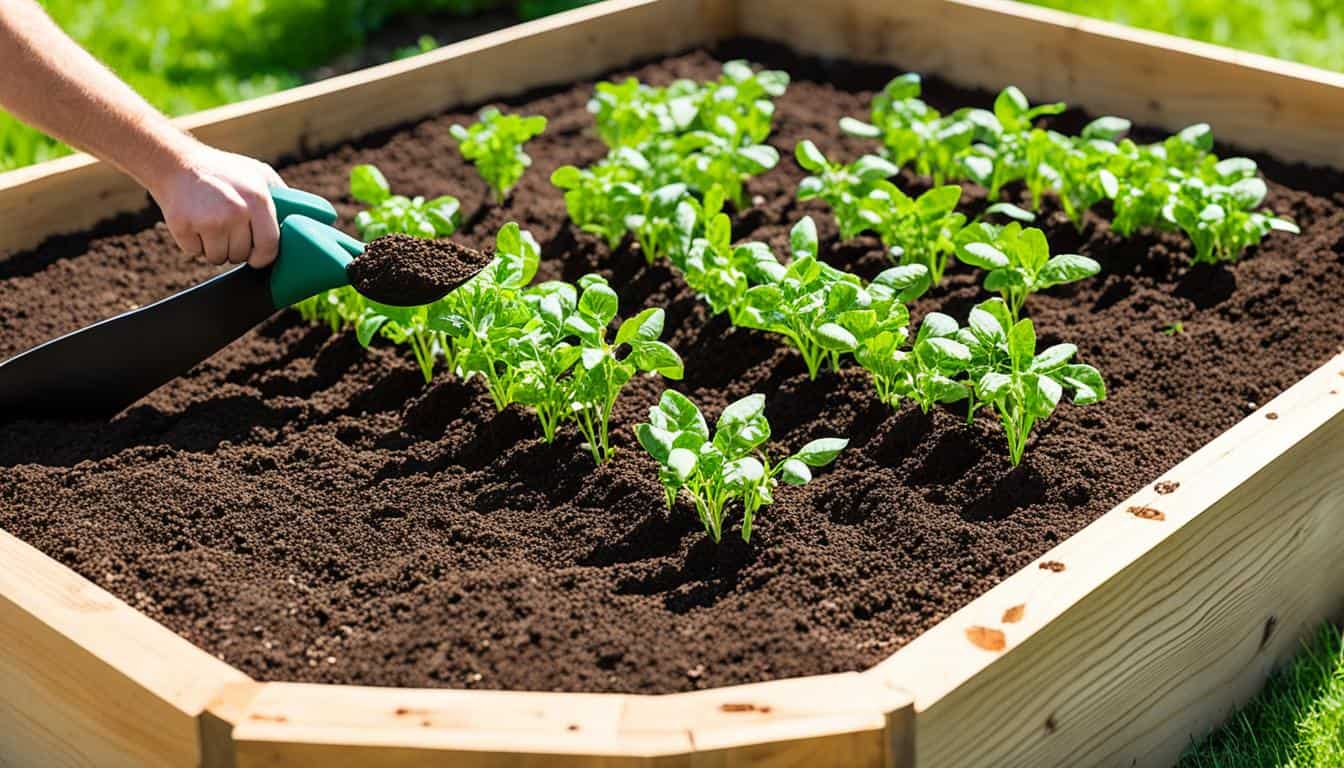
Leave a Reply